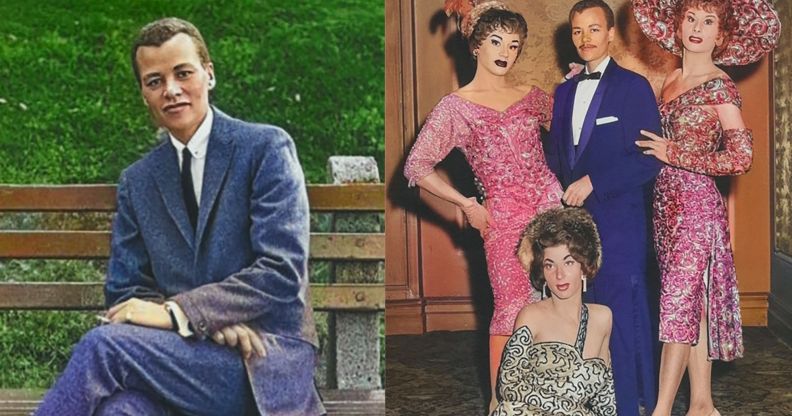Trans+ History Week: Trans people have always been here – and these incredible photos prove it

Trans activist Eli Erlick has been colourising photos of trans people throughout history to “remind viewers that trans people – real people – have always existed”. (Twitter/@EliErlick)
The first-ever Trans+ History Week has begun. Its founder, Marty Davies, wants everyone to know that trans people have always existed.
Writer, activist and academic Eli Erlick is also fighting against the erasure of trans history, by curating and sharing beautiful full-colour photos showing trans people throughout the ages.
Eli Erlick’s journey “starts with my story being a trans girl who came out in 2003 – before we were supposed to have existed, according to the mainstream media right now,” she tells PinkNews.
About a year ago, frustrated with the “erasure of trans history” and continued anti-trans narratives, she began writing a history book.
It spotlights underreported trans stories from 1850 to 1950, including some experiences that “haven’t been told in 120 years”.
“Unfortunately, a lot of history isn’t just withheld on purpose by the far-right but also by academics and publishing companies that want to maintain the intellectual property of our work,” Eli says.
“So I wanted to do something very public, very accessible and very understandable to the mainstream.”
In doing so, Eli has come across stories like that of a Black trans woman who had been recently freed from slavery, and was the “earliest case of the government approving a trans woman to live as a woman”.
As part of her work, Eli colourises historical black and white images. As she explains: “We know from past social movements, particularly the civil rights movement, colourisation brings the subject closer to the viewer. We think of subjects who don’t have photos or have black and white photos as lesser, as in the past, as of a different time, era or culture – even when this could have only been 50 years ago.”
Among these images, which Eli regularly shares to Twitter, are ones of the Stonewall Rioters, highlighting how it was “fought by a multi-racial, multi-gender group” led by Stormé DeLarverie, a Black butch lesbian and drag king.
Eli has also posted images of world champion athlete Mark Weston, who transitioned in 1936, and Christine Jorgensen, who was the first trans person to become widely known in the US for having gender-affirmation surgery.
Many of the images highlight how queer and trans people of colour have “historically led our movements” but are “chronically erased by photography processing”. Shade, tone and colour are “indistinguishable in many black-and-white photos”.
“As countless media critics have pointed out for over a century, racism is built into photography,” Eli adds.
“The flash of the camera, shadow on one’s face, or a dark background easily erases dark skin in black-and-white.
“Colourising and enhancing photos following the Stonewall Riots show a large number of people of colour who were barely visible and whitened.
“Similarly, while reviewing archival photos from Magnus Hirschfeld’s Institut für Sexualwissenschaft – widely considered the first trans clinic – I observed much more variation in race and ethnicity than is reported.
“Even during the early colour photography era, light skin was considered the ‘default’ and colour-matching processes for darker tones were neglected until chocolate manufacturers began to complain to companies like Kodak in the 1960s.”
Through her research, Eli has found that trans people were treated relatively “well” in the 19th and 20th centuries – especially compared to how the community is “currently being demonised as a sort of contagion”.
“Trans people used to be treated, at worst, as a curiosity or even a medical breakthrough, and it was generally positive,” she says.
“I published a story on Mark and David Farrow a few months ago, and they were called ‘brave boys’ – these two trans brothers – by The Daily Mail of all places.”
She adds: “It’s clear that right now we have a significant problem in reporting and also in queer and trans historiography.”
Eli repeats the adage that “seeing is believing”, and trans historians like Jules Gill-Peterson are constantly reminding audiences that “trans people have always been here”. But in visual culture, she says, it’s simply not enough to “repeat these sayings, but we must also show it”.
“We shouldn’t have to produce evidence of our own history,” she says. “Yet, we are forced to when today’s targeting of trans youth relies on the myth that we are somehow new or a product of modernity.
“Colouring these images helps remind viewers that trans people – real people – have always existed and will continue to thrive no matter how much we are attacked.”

